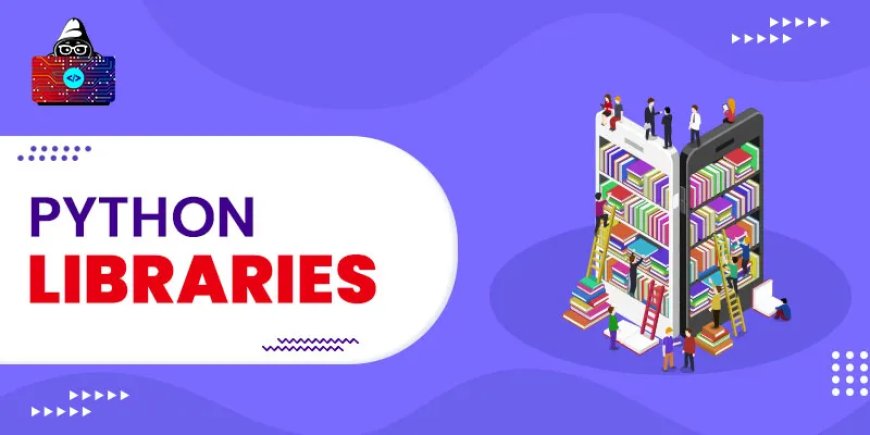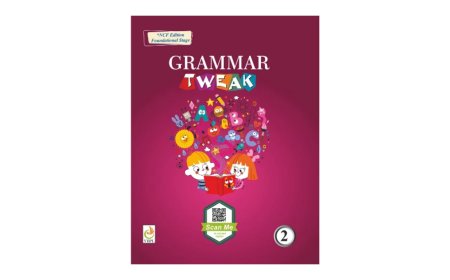Python Libraries Every Data Scientist Should Know
Discover essential Python libraries every data scientist should know for data analysis, visualization, machine learning, and deep learning tasks.

Python programming language has become the most opted language of choice in data science, and why this is so, is not hard to find out. It is simple, wide-ranged, and has a lot of libraries available, which makes it an ideal base to deal with such a wide variety of tasks as data cleaning and advanced machine learning. Another major factor that contributed to the domination of Python in this domain is its abundance of libraries that are intended to target particular phases of the data science pipeline.
You can use Python to make a messy data clean-up, plot trends, develop predictive models, or deploy fault-tolerant systems. Interestingly, many developers also explore using Python for website development and automation alongside data science, thanks to the languages adaptability.
NumPy: The Foundation of Numerical Computing
NumPy, short for Numerical Python, is one of the foundational libraries in the data science stack. It offers support for large, multi-dimensional arrays and matrices, as well as a diverse array of mathematical functions to manipulate them.
What makes NumPy essential is its performance. Operations on NumPy arrays are significantly faster than regular Python lists due to its optimized C-based backend. Many other data science libraries, including Pandas, Scikit-learn, and TensorFlow, are built on top of NumPy or utilise its structures under the hood.
Pandas: Data Wrangling Made Easy
Pandas is the library that revolutionized data manipulation and analysis in Python. It introduces two powerful data structures: Series (1D) and DataFrame (2D) that allow for intuitive handling of structured data.
With Pandas, you can read data from CSVs, Excel files, SQL databases, and even JSON APIs. It provides functionality for filtering, grouping, aggregating, merging, reshaping, and cleaning datasets. These capabilities are crucial when preparing data for analysis or machine learning.
Matplotlib and Seaborn: Data Visualization
Visualization is an essential part of data science. It helps identify trends, patterns, and outliers, and plays a key role in communicating findings to stakeholders.
The most commonly utilized Python library for basic visualizations is Matplotlib. It allows you to create line charts, bar plots, histograms, scatter plots, and more. Though powerful, its syntax can be verbose for more complex plots.
At this point, Seaborn is useful. Seaborn, built on Matplotlib, provides a high-level interface for creating visually appealing and informative statistical graphics. It makes it easy to create complex plots like violin plots, boxplots, heatmaps, and pair plots with minimal code.
These libraries are emphasized in any practical Python Course in Chennai that focuses on exploratory data analysis or dashboard creation.
Scikit-learn: Machine Learning Made Accessible
As far as the traditional machine learning is concerned, the library that is used is Scikit-learn. It provides high-level, easy to use tools to perform data mining and data analysis with an interface layered over NumPy, SciPy and Matplotlib.
The Scikit-learn package accommodates many algorithms available on classification, regression, clustering, dimensionality reduction and model choice. Scikit-learn includes many algorithms and utilities to help you build a spam filter, predict housing prices or segment customers, to name just a few.
TensorFlow and PyTorch: Deep Learning Libraries
If youre working on neural networks, TensorFlow and PyTorch are the top choices. TensorFlow, backed by Google, is great for deploying scalable deep learning models, while PyTorch, developed by Facebook, is known for its dynamic and flexible frameworkfavored in research and prototyping.
Both libraries highlight the growing importance of Python technology used for applications in fields like healthcare, finance, autonomous systems, and voice assistants. These tools are often introduced in advanced levels of Programming Courses in Chennai, especially those integrating AI modules.
Statsmodels: Statistical Analysis
While Scikit-learn focuses on predictive modeling, Statsmodels is geared toward statistical analysis. It offers tools for estimating and interpreting a range of statistical models, including linear regression, logistic regression, time series analysis, and hypothesis testing.
Statsmodels is invaluable when you need to understand the relationship between variables and interpret model outputs using p-values, confidence intervals, and standard errors.
NLTK and spaCy: Natural Language Processing
Text data is everywhere, and two libraries stand out for processing it: NLTK and spaCy.
NLTK (Natural Language Toolkit) is ideal for learning and experimenting with linguistic concepts. It provides easy access to corpora and tools for tokenization, stemming, and parsing.
These libraries are great for building applications like chatbots, recommendation systems, and voice assistantsreinforcing how Python technology used for application stretches far beyond data analytics.
Python's vast ecosystem of libraries is one of the biggest reasons it's the top choice for data science. From data manipulation and visualization to advanced machine learning and natural language processing, Python offers a library for every task.





































